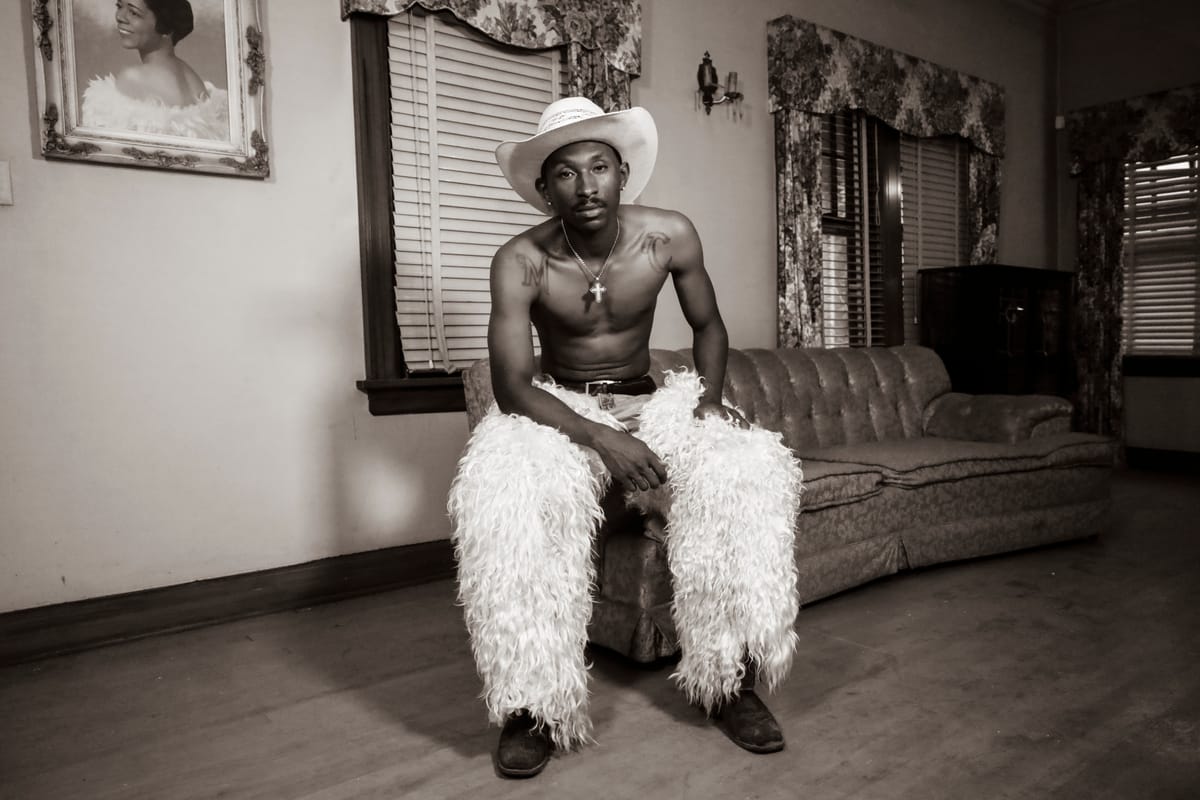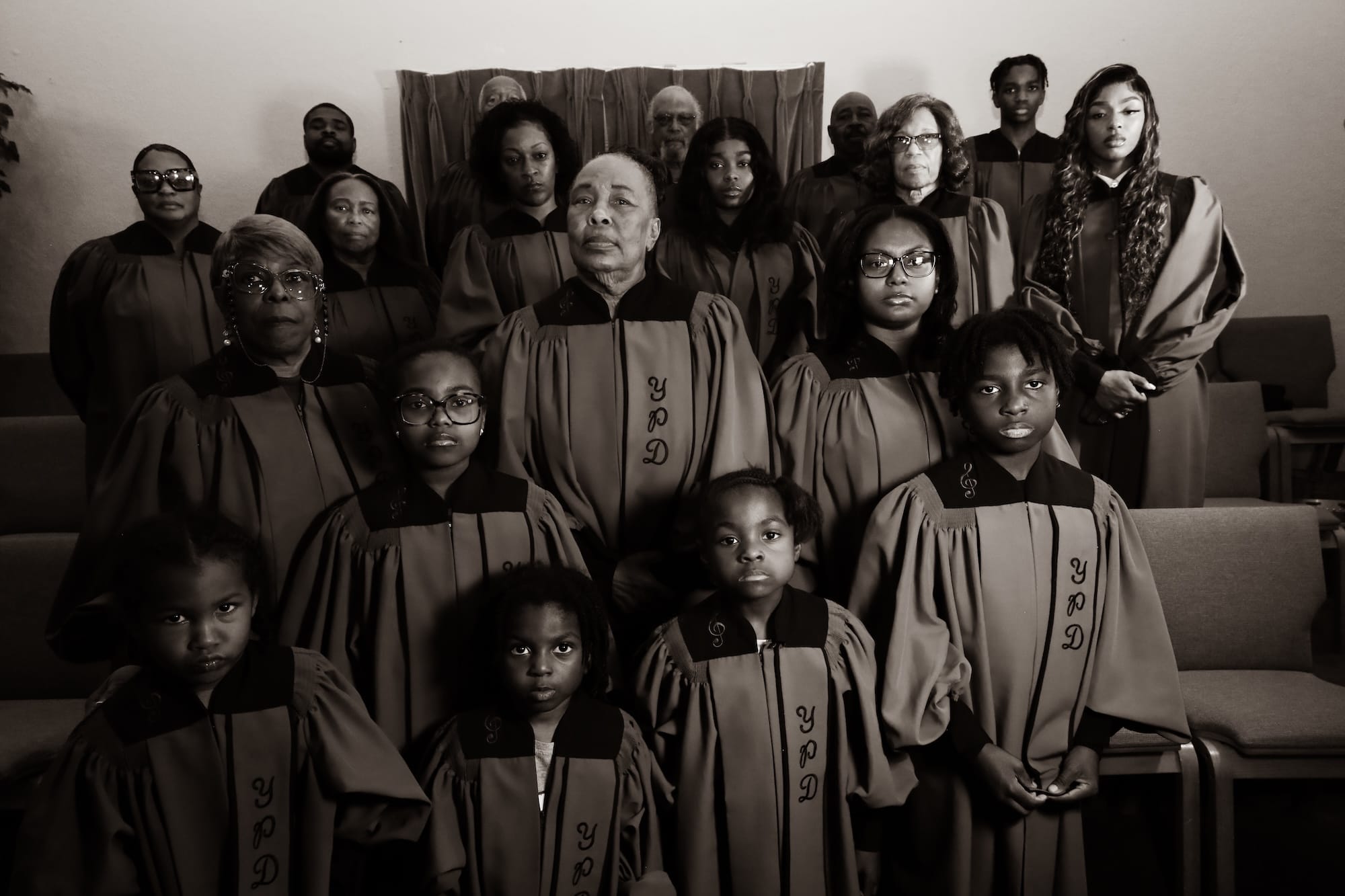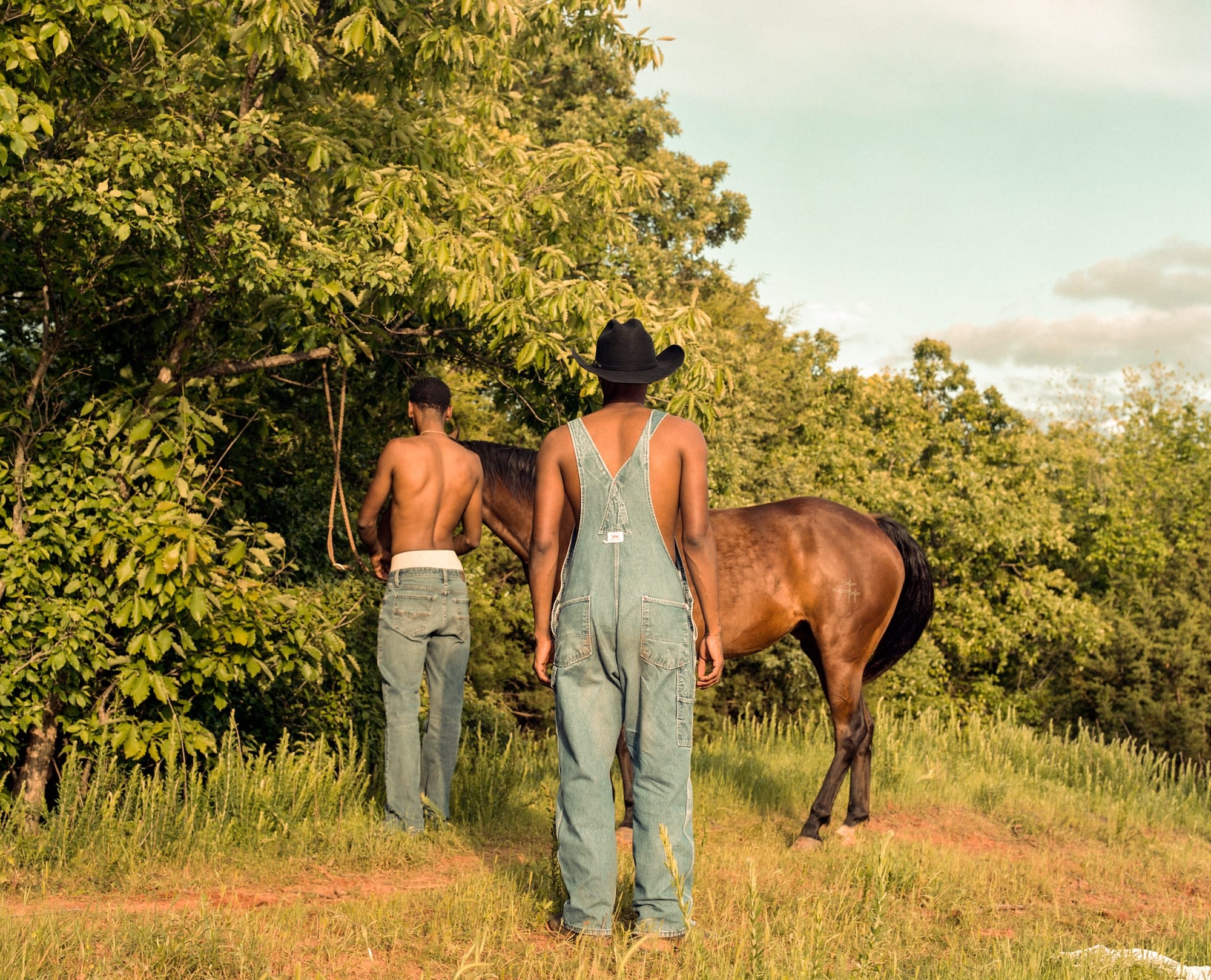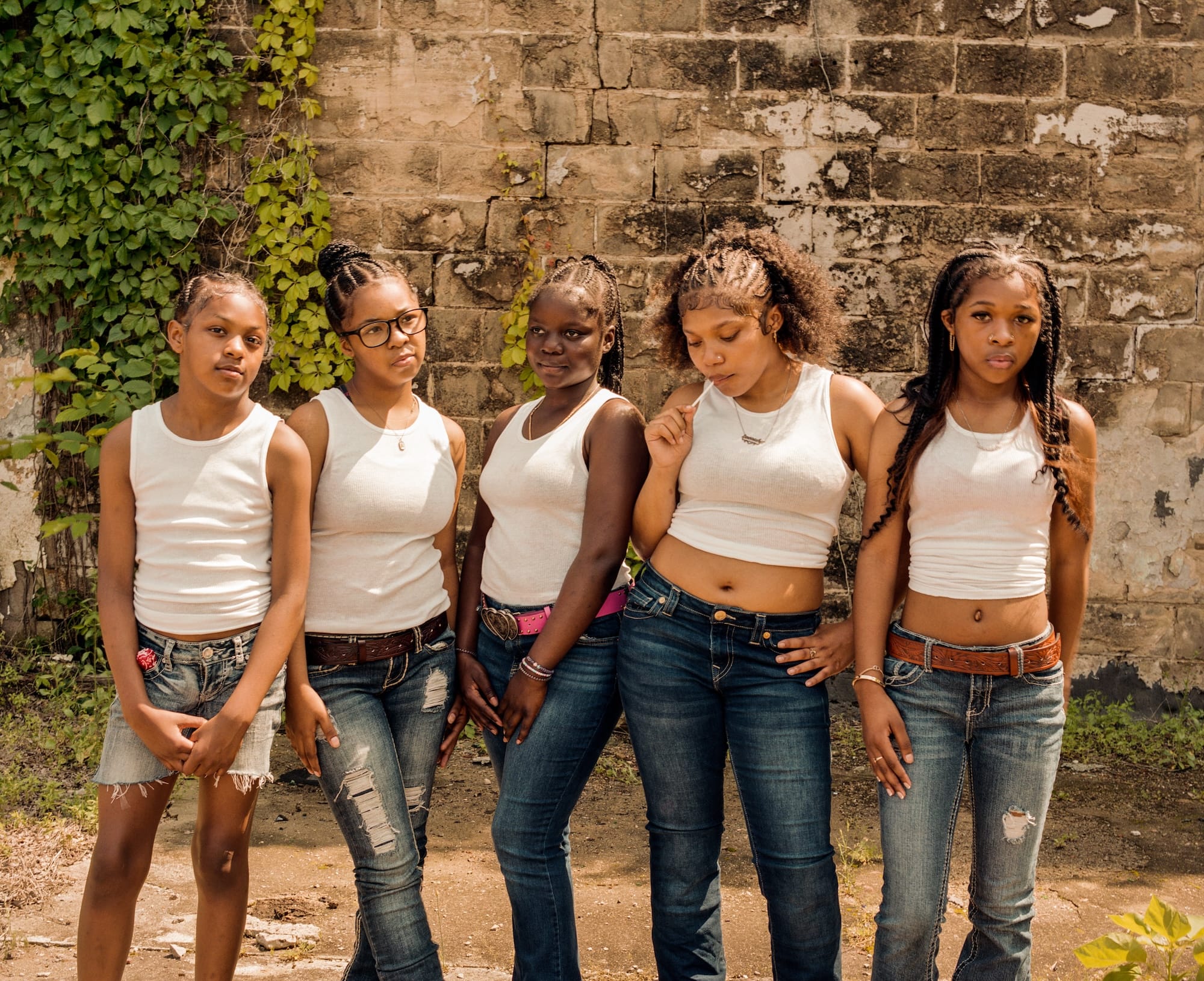
Jakian Parks has established his reputation as a photographer and documentarian by showcasing Black excellence and the equestrian lifestyle in Oklahoma through photography. The powerful response he garnered over recent years led to the creation of his non-profit organization Oklahoma Cowboys in 2022, and forthcoming solo exhibition at Oklahoma Contemporary opening on Nov. 6.
His introduction to Black rodeo culture came from his late aunt, Shay Nolan, who was embedded in the Black cowboy community in Oklahoma where Parks attended rodeos with her growing up. “It’s so crazy,” he says, “because when I first went back out there, I couldn’t believe it was still going on. It was unbelievable, because I hadn’t seen it since my aunt passed away and it was still thriving at the same rate that it was when I stopped going years ago. It just wasn’t spotlighted.”


LEFT: “The Sanctified West”, RIGHT: "Dad's Reflection" ~ The Black Land by Jakian Parks
Parks’ gift is in his ability to capture the everyday lives of Black cattlemen, cowboys and community members by framing their lives in a way that embodies the raw essence of the resilience, dedication and pride that this community carries. Through this curation of photographs, he honors the ecosystem that exists between the land and its people—celebrating the continual exchange of care, resources and values that are passed on through generations.
Oklahoma Contemporary reveals the intention of this show by stating that, “at the heart of this exhibition is the land, a complex and enduring source of both struggle and identity within the African American experience. For Black Americans, farmland evokes a lineage of forced labor, sharecropping and ongoing challenges around ownership and sovereignty. Yet The Black Land also affirms the expertise and divination that has grown from this proximity. Through its gestures and imagery, the exhibition suggests that ancestral spirits hold the key to a deeply rooted knowledge of plantation systems, gardening traditions and livestock ranching.”
“To me, The Black Land uplifts the Black community in a way that feels innately spiritual. The facial expressions are really pure and honest, and real people are being captured in a way that is uncontrolled. That adds so much truth and so much beauty to the overall story line,” says guest curator Chloé Flowers.
“The Black Land is an appreciation and tribute to Black culture. It preserves the historical efforts put in by our ancestors and those before us. For example, a cowboy who existed back in the 1940s now has a grandson who is using the same principles that his grandfather used to tend to the land. It’s a celebration of generational wealth in multiple ways.”
Originally the organizers had selected a different title for the exhibition, but after reflecting on the conversations with subjects in the photographs, everything kept leading back to the natural land where these communities live. “One woman we interviewed described her upbringing and told us that they grew their own food, and had chickens and horses. They had a little grocery store on the corner to buy milk and things like that,” says Flowers. “I’m sitting there creating this visual in my head thinking, like, this is the Black land. She lived in a Black town, everything that they did there. They didn’t really go out anywhere. So I asked her, ‘Where did you work?’ and she said, ‘I didn’t have a job, I picked cotton.’ They had food, they went to school. Everything happened on these grounds.” Their life’s work was to care for the land, because if they cared for the land, the land cared for them.


LEFT: “Brotherhood”, RIGHT: "Homegirls" ~ The Black Land by Jakian Parks
“They are a primary source,” says Flowers. They are very generous with their time and their resources, welcoming us to walk around their farmland and ride their horses.”
“When I first started photographing cowboys, they were shocked to see that anybody was coming out to take photos of it,” says Parks. “They never had that experience before. And I remember that in the first year, they were like, ‘You wanna take a photo of me?’ Then once I kept coming around, they became more and more excited to be on camera and came up to me like, ‘Get me, get me!’”
Flowers and Parks explained that the titles of the photographs further emphasize the meaning behind each image. “The photo where the two cowboys are back to back is called ‘Brotherhood.’ These two individuals’ bond is, like, incomparable. When I was out there hanging out with them, I just saw a different type of brotherhood. They were ‘ride or die’ for each other, like they would actually die for each other,” Parks remembers.
“There’s another photo in the show called ‘Homegirls,’ and it’s of these girls together that I shot in Boley, Oklahoma, at the rodeo. I saw these girls altogether, hanging out, with lollipops in their hands, and I was just just thinking in my head, like ‘This is the most incredible shot right here.’ I just imagine that they just got done talking sh*t, you know, hanging out while they’re on the way to the rodeo. So that’s how that kind of title came up for that one.”
“Titling the images and speaking life into each once before selecting which images will be on display,” Flowers says, was one of her main contributions to this exhibition. “We selected the images that we believe will make people feel something and are emotion-provoking. The ones that people can [sense] themselves in. Somewhere in that perfect space between ordinary and magical.”
She continues, “The Black perspective being uplifted, and exemplifying magnificence. They look ethereal through these images, and I’m proud to present Black lives in a way that isn’t based in despair and lack. I have really strong, passionate ideas and feelings surrounding Blackness, and I think it has really been rewarding learning about all of the things our ancestors have done. It’s really become my life’s work to pass on history that is accurate, and discover information that is happy, and also astonishing. Some of these people are being interviewed for the first time.”
Both Parks and Flowers hope that this showcase of culture continues to reclaim the territory that this community has built over generations. “Different cities and states are known for different things, and we should be known for Black cowboys because we are home to most of them,” says Parks. “I want to one day see Black cowboy paintings as soon as you enter the city, because this is their stomping grounds.”
Opening at Oklahoma Contemporary on Nov. 6, The Black Land will be showcased at the Mary LeFlore Clements Oklahoma Gallery through June 1, 2026.
Follow Jakian Parks’ journey on Instagram @jakianparks and @oklahomacowboys, and find details for The Black Landexhibition at Oklahoma Contemporary @okcontemporary and oklahomacontemporary.org.

